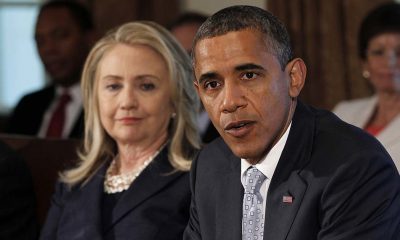World
US to take in 10,000 Syrian refugees despite Paris attacks

Washington: The US plans to take in 10,000 Syrian refugees in 2016, despite terrorist attacks in Paris that left at least 129 dead and more than 350 injured.
“We’re still planning to take in Syrian refugees,” Efe news agency quoted National Security Deputy Advisor Ben Rhodes as saying on Sunday.
Rhodes said the US has “very extensive screening procedures for all Syrian refugees who come to the US.”
“We have to recognise there are tragic victims of this conflict, there are women, and children, orphans of this war and I think we need to do our part, along with our allies, to provide them a safe haven,” said Rhodes.
His comments come after the passport of a Syrian citizen was found at one of the sites of the attack in Paris, although it was not certain if it belonged to the person it was found next to.
According to newspaper reports, one of the suspects of the attacks might have come to Paris after crossing Serbia and Croatia as a refugee.
Several Republican presidential candidates have criticised Obama administration for allowing the arrival of refugees fleeing the Syrian war.
“We won’t be able to take more refugees. It’s not that we do not want to, it is that we can’t. Because there’s no way to background check someone that is coming from Syria… You can’t pick up the phone and call Syria,” said Republican Senator and presidential candidate Marco Rubio.
Business tycoon Donald Trump has also warned he will send back Syrian refugees if he makes it to the White House.
On September 10, Obama ordered his government to start preparations to take in at least 10,000 Syrian refugees in the new fiscal year, which began on October 1 and ends September 30, 2016, to deal with the immigration crisis affecting Europe.
World
Lockdowns in China Force Urban Communities to Defy Censorship and Vent Frustration Online

Shanghai’s rich middle class is leading a wave of online dissent over the strict and prolonged lockdowns imposed in various parts of the country. Chinese internet censorship is struggling as patience is wearing thin in many urban centers, coming up with creative forms of online protests.
Social Media Posts Revealing Lockdown Tension in Shanghai
Drawn-out lockdowns are nothing new in China as authorities insist with the nation’s zero-Covid policy since the start of the pandemic. Currently over This time around, however, metropolitan areas like Shanghai are increasingly difficult to keep quiet, given that its more than 25 million residents have seen weeks of total isolation along with food shortages and many other service interruptions.
Dozens of towns and reportedly over 300 million Chinese citizens have been affected by lockdowns of different severity. As expected, urban netizens have been most outspoken over their difficulties by finding creative ways to get around state censorship and bans placed on topics, news comments and spontaneous campaigns.
Shanghai residents have been using mobile proxies and hijacking seemingly unrelated hashtags to talk about healthcare issues, delivery failures and the overall severity of their situation. The “positive energy” that the Chinese government wants to transmit during the recent prolonged series of lockdowns does not come naturally to those counting food supplies and online censors are working hard to filter words, trending topics and undesired social media sharing.
WeChat groups and message threads are under constant monitoring. Posts questioning the zero-Covid approach have been quickly deleted, including by leading Chinese health experts like Dr. Zhong Nanshan. Video footage is soon censored and protests and investigations are quickly made to disappear.
Where this has not worked, officials have exposed banners with warnings and outright threats like “watch your own mouth or face punishment”, while drones have been patrolling the city skies. Yet, if anything, this has led to further tensions and unspoken confrontation with Shanghai’s educated and affluent middle class.
Creative Online Solutions Harnessing Civic Energy
Announcements by Chinese social media that they would be publishing the IP addresses of users who “spread rumors” have not helped either. Tech industry research has shown that much of Asia’s tech-savvy population has a habit of using mobile proxies and other privacy tools, quickly finding workarounds to browse the internet freely and talk to the world about the hottest topics.
The sheer volume of forbidden posts is already a challenge for the very censorship system, experts explain. Unable to track all trending hashtags, state workers overlook topics that speak about the US, Ukraine or other popular news. Linking human rights elsewhere to their situation, Chinese online dissidents establish their informal channels and “hijack” the conversation to share personal or publicly relevant information about the Covid suppression in their town.
Sarcastic and satirical posts still dominate. Others hope to evade the censors by replacing words from famous poems or the national anthem. One thing is certain – social media, when harnessed with the right creativity, has proven its ability to mount pressure on the government in even some of the most strictly controlled tech environments like China.























